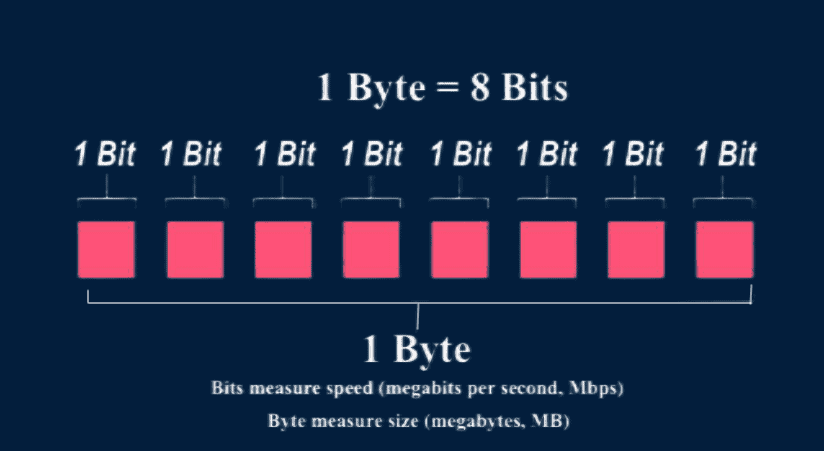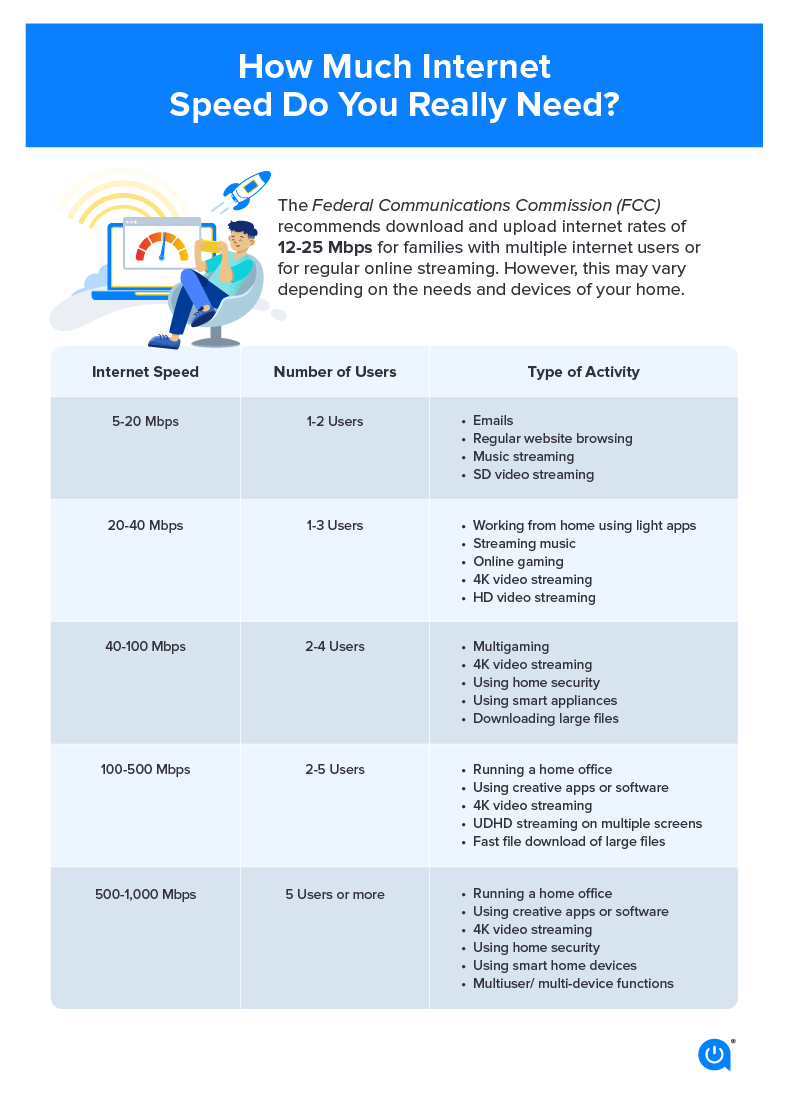The Future of Internet Speeds: Trends in Megabits Per Second
The Future of Internet Speeds: Trends in Megabits Per Second
Blog Article
How Megabits Per Second Effect Your Online Tasks
The principle of megabits per second (Mbps) plays a critical duty in shaping our online experiences. Higher Mbps can enhance performance and lower disruptions, while poor speeds might foster frustration and inadequacy.
Understanding Megabits Per Second
When taking into consideration web rate, it's necessary to understand the idea of megabits per second (Mbps), which serves as a basic measurement for information transfer rates. This statistics quantifies just how much information can be transferred over a net connection in one second, providing a clear understanding of performance capacities - Megabits Per Second. For context, one megabit amounts to one million bits, and Mbps is frequently used to reveal transmission capacity for various on the internet tasks
A greater Mbps shows a faster internet link, making it possible for users to carry out jobs such as downloading documents, surfing websites, and participating in on the internet pc gaming more successfully. Regular surfing calls for around 1-5 Mbps, while streaming high-def video clip may demand 5-25 Mbps. Understanding these requirements is critical for identifying the proper net rate required for details tasks.
In addition, the variety of tools attached to a network can influence total efficiency. Numerous individuals streaming, gaming, or downloading at the same time can strain available data transfer, leading to slower speeds - Megabits Per Second. Evaluating personal online habits and needs is vital in picking a net strategy that aligns with one's demands, making certain a smooth electronic experience
Streaming and Buffering Issues
Streaming high-definition content has become a staple of modern on-line amusement, yet it is usually come with by irritating buffering problems. These interruptions can significantly diminish the viewing experience, causing discontentment and prospective loss of audience interaction. Buffering happens when the data sent from the streaming service is not received swiftly enough to keep a smooth playback, usually as a result of insufficient net speed measured in megabits per second (Mbps)

In addition, real-time streaming can be affected by network congestion, which occurs when multiple tools share the very same data transfer. Optimizing link speed and making sure ample Mbps is important for a seamless streaming experience. As streaming solutions remain to evolve, recognizing the influence of Mbps on buffering issues stays crucial for customers looking for nonstop home entertainment.
Online Gaming Efficiency
The influence of web rate on on-line activities expands beyond streaming, substantially influencing on the internet pc gaming efficiency. In competitive gaming, low latency and high bandwidth are critical for a seamless experience. A quick connection reduces lag, enabling gamers to respond quickly to in-game events, which can be the difference in between success and defeat.
Bandwidth, gauged in megabits per second (Mbps), plays an important duty in supporting numerous devices and gaming platforms at the same time. Not enough transmission capacity can cause dropped links or minimized video game top quality, negatively affecting gameplay. As an example, online multiplayer games require significant information transfer, specifically during peak video gaming hours when countless gamers are online.
Busy first-person shooters require higher rates to keep responsiveness, while turn-based technique games might function fairly well on reduced rates. As on the internet pc gaming continues to evolve, with raising graphical integrity and even more complicated multiplayer atmospheres, the need for higher Mbps will only heighten.
Video Clip Conferencing High Quality
In today's digital landscape, video clip conferencing high quality is heavily influenced by web rate, especially in terms of transmission capacity and latency. High-quality video clip calls require enough bandwidth to transfer sound and video information perfectly. Typically, a minimum of 1.5 Mbps upload and download speeds is suggested for common definition video, while high-def video clip conferencing normally demands at least 3 Mbps.
Latency, or the delay between sending out and getting information, also plays an important role in the customer experience. Low latency makes certain that conversations flow normally without unpleasant stops briefly or interruptions. Preferably, latency should be listed below 150 milliseconds for efficient communication. Higher latency can bring about resemble, lag, and disjointed interactions, which can hinder cooperation and interaction throughout conferences.
Additionally, several individuals in a video meeting can strain offered bandwidth, demanding also greater speeds. Network blockage, often triggered by synchronised activities like streaming or downloading, can further weaken video clip top quality. Thus, for companies counting on video clip conferencing for remote cooperation, recognizing the more helpful hints partnership between megabits per general and second communication quality is essential for maintaining efficiency and boosting reference virtual communications.
Picking the Right Web Plan
Picking an ideal net strategy is vital for guaranteeing ideal efficiency in various on the internet activities, specifically in settings that demand high transmission capacity, such as video clip conferencing and online video gaming. Megabits Per Second. When taking into consideration an internet plan, it is necessary to review both the rate and data allowance to match your specific use requirements
For households with numerous customers involving in simultaneous tasks, a strategy supplying higher megabits per second (Mbps) is advised. Normally, a minimum of 25 Mbps is suitable for typical streaming and surfing, while strategies going beyond 100 Mbps are more effective for even more extensive jobs. In addition, consider the nature of your online tasks; video clip conferencing calls for a minimum of 1.5 Mbps publish rate, while online pc gaming might need a lower latency yet constant connection.
It is additionally crucial to examine your data cap. Limitless data strategies can prevent strangling and disturbances, especially if hefty use is anticipated. Finally, research study provider in your area, as schedule and pricing can differ. By attentively picking an internet plan customized to your requirements, you can boost your online experience, guaranteeing smooth, uninterrupted accessibility to your preferred tasks.
Conclusion
To conclude, the value of megabits per second (Mbps) fit on-line activities can not be overemphasized. Greater Mbps assists in seamless streaming, decreases buffering, boosts video gaming experiences, and guarantees top quality video clip conferencing. Alternatively, poor data transfer can cause irritating interruptions and diminished efficiency throughout numerous jobs. Consequently, a complete understanding of private or home Mbps requirements is essential for selecting an appropriate internet strategy that properly sustains diverse online tasks and individual needs.

Typically, a minimum of 25 Mbps is suitable for conventional streaming and browsing, while strategies going beyond 100 Mbps are better for even more intensive tasks. Furthermore, think about the nature of your online tasks; video conferencing calls for at the very least 1.5 Mbps publish rate, while on the internet video gaming might require a reduced latency but constant link.
Report this page